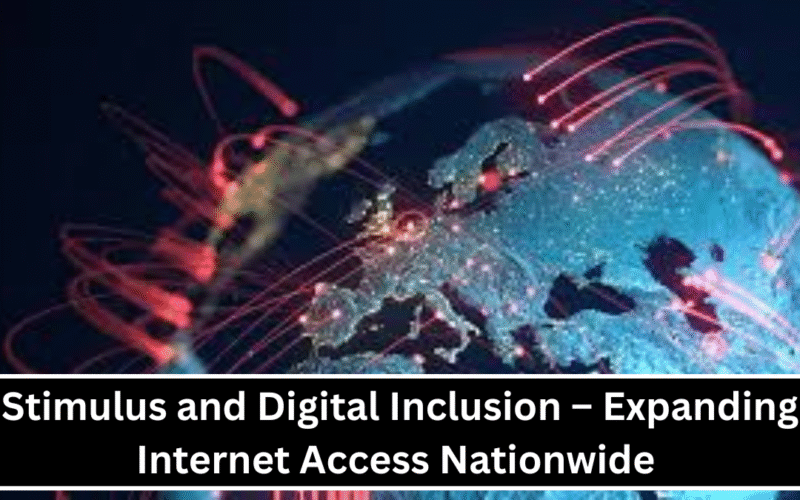In today’s digital world, access to the internet is no longer a luxury – it’s a necessity. From attending school to finding jobs and accessing healthcare, everything depends on being connected. However, millions of Americans in rural and low-income areas still lack reliable internet access. The federal stimulus programs introduced in recent years have aimed to fix this digital divide. With billions invested in broadband infrastructure and digital inclusion, the U.S. government is working hard to ensure no one is left behind in the digital age.
Bridging the Digital Divide: How Stimulus Funding Is Making a Difference
The COVID-19 pandemic exposed the reality of digital inequality in the U.S. While many people were able to work from home, attend online classes, or see a doctor through virtual appointments, others were left out due to a lack of internet or devices. In response, the federal government launched several stimulus initiatives to support broadband expansion and digital access. One major effort was the Emergency Broadband Benefit Program, which provided low-income households with discounts on their monthly internet bills and a one-time discount for a laptop or tablet. This program was later replaced by the Affordable Connectivity Program (ACP), helping more than 20 million American families stay connected.
Another key investment was through the Infrastructure Investment and Jobs Act, which allocated $65 billion to improve internet access across the nation. This included funding for laying fiber-optic cables, building new broadband towers, and improving service in underserved and unserved areas. These programs have helped small towns, tribal lands, and poor neighborhoods get internet access – often for the first time. Public libraries, community centers, and schools have also benefited, allowing students and families to access digital tools and resources.
Digital Inclusion: More Than Just Internet Access
While providing internet connections is a major step, true digital inclusion goes further. It involves helping people understand how to use digital tools and making sure they have the skills needed to thrive online. Stimulus funding also supports digital literacy programs, helping senior citizens, job seekers, and students learn how to use the internet safely and effectively. Programs like Digital Navigators have emerged in cities and states, where trained staff or volunteers help residents learn how to apply for jobs online, use video calls, and protect themselves from scams. Additionally, the government is promoting access to affordable devices. Many low-income families may now qualify for free or discounted laptops or tablets. Nonprofits and tech companies have also partnered with schools and local governments to distribute used or refurbished devices to those in need.
Digital inclusion also includes support for people with disabilities, ensuring websites and platforms are accessible through screen readers, voice commands, or adaptive technology. Together, these efforts are helping build a society where everyone – regardless of income, age, or background – can fully participate in the digital world.
Expanding internet access nationwide is more than laying cables or offering discounts. It’s about building a future where everyone has the tools, skills, and confidence to thrive online. Thanks to the stimulus-funded programs and government support, digital inclusion is becoming a reality for millions of Americans. From rural towns to inner cities, the promise of the internet – equal opportunity, access to information, and a better life – is now reaching those who need it the most. Continued investment and awareness are crucial in ensuring that the digital divide continues to shrink, not grow.
FAQ’s:
1. What is digital inclusion?
Digital inclusion means making sure everyone has access to affordable internet, the right devices, and the skills to use them. It also involves ensuring digital tools are accessible to people with disabilities.
2. How did stimulus funds help with internet access?
Stimulus packages provided billions for broadband expansion, device subsidies, monthly internet discounts, and digital literacy training for underserved communities.
3. What is the Affordable Connectivity Program (ACP)?
ACP is a federal program that gives eligible low-income households a discount of up to $30 per month on internet bills and up to $100 off a computer or tablet purchase.
4. Who benefits from digital inclusion programs?
Low-income families, rural communities, students, senior citizens, job seekers, and people with disabilities benefit the most from digital inclusion efforts.
